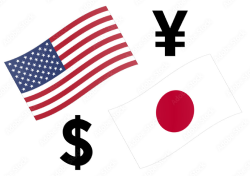
Flexity Analysis for USDJPY
Forecast Overall(Short-Term, Long-Term): ST=Probably Down LT=Undecided
Forecast Methods(Short-Term, Long-Term):
[Method0] ST=Down LT=Down
[Method1] ST=Down LT=Same
[Method2] ST=Up LT=Up
FlexityIndicator Analysis Method(0)
Short-Term: **Answer:** The USD/JPY is expected to go down in the short term. This conclusion is based on several key points: 1. **Short-Term Trend (2025):** The yen is expected to strengthen, suggesting a potential decrease in USD/JPY. 2. **Price Range Forecast:** The current price of 146.88 exceeds the projected range for 2025 (140.00-145.00), indicating downward pressure. 3. **Market News:** A recent 1.02% drop with increased volume signals a bearish trend. 4. **Technical Indicators:** Both short-term and long-term moving averages show sell signals, reinforcing the bearish outlook. While there's a medium-term projection for an increase, immediate factors point to a short-term decline. Long-Term: Based on the analysis provided, the long-term outlook for USD/JPY suggests a cautious stance with a potential for decline. While there are fundamental factors indicating possible appreciation due to US interest rate hikes and weaker yen dynamics, technical indicators such as moving averages and MACD point towards a bearish trend. Therefore, despite some bullish predictions, the longer-term expectation is that USD/JPY may go down. **Answer:** The price for USD/JPY is expected to go down in the long term.
Result: [Method0] ST=Down LT=Down
FlexityIndicator Analysis Method(1)
Short-Term: **Answer:** Based on the analysis of the trading forecasts and market sentiment provided, the overall outlook for USD/JPY suggests a bearish trend. Although there are instances where the pair shows strength by breaking above resistance levels (such as 148.00) and surpassing the EMA50, these bullish moves appear to be short-lived, often followed by declines influenced by selling pressure and negative momentum. The repeated pattern of rises followed by subsequent falls, combined with the bearish market sentiment driven by technical indicators like EMA50 dynamics, indicates that the price is expected to go down in the short term. Long-Term: Based on the provided context, there isn't enough information to determine whether the USD/JPY pair is expected to rise, fall, or remain stable in the long term. The analysis focuses solely on short-term price movements and technical indicators without addressing underlying economic factors or long-term trends. Therefore, it's not possible to predict a long-term direction for the pair. Answer: It is not possible to determine if USD/JPY will go up, down, or stay the same in the long term based on the given context.
Result: [Method1] ST=Down LT=Same
FlexityIndicator Analysis Method(2)
Short-Term: Based on the analysis of the provided information, here is the structured conclusion: ### Conclusion: - **Price Expectation for USD/JPY in Short Term:** **Expected to go up** **Reasoning:** 1. **Technical Analysis:** - If USD/JPY holds above 148.00 (a key pivot point and resistance level), it indicates a bullish scenario with potential upward movement towards 149.11, supported by the convergence of the 200-day Moving Average and another resistance level. 2. **Market News:** - Reduced odds for an immediate September rate cut (71%) suggests a less dovish stance from the Fed, potentially strengthening the USD. - Federal Reserve Chair Powell's speech could provide clarity, but current indicators lean towards potential upward movement in USD/JPY. ### Final Answer: The price for USD/JPY is expected to go up in the short term. Long-Term: **Final Answer:** The long-term outlook for USD/JPY suggests an **upward movement**, driven by divergent monetary policies with the Fed likely continuing rate hikes while the BoJ maintains lower rates. This could strengthen the USD against the JPY. However, factors such as safe-haven dynamics and technical resistance levels (especially around 147.07) will be critical in determining the trajectory. If USD/JPY breaches key resistance levels, an upward trend is expected; otherwise, downward movement might occur due to yen strength during global uncertainty. Overall, the primary drivers lean towards a bullish outcome unless significant sentiment shifts intervene.
Result: [Method2] ST=Up LT=Up
